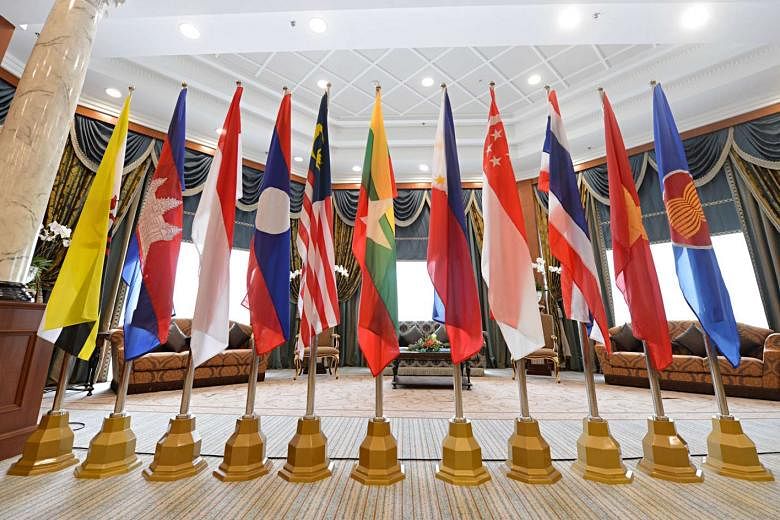Q How will the Asean Economic Community (AEC) change the global landscape?
A By transforming Asean into a single market and production base, the AEC will boost the competitiveness and connectivity of the region as a whole. And it could lift aggregate output by 7 per cent by 2025.
Ideally, the AEC will help less developed economies link up with more developed ones, bringing about more equitable economic development across the region. Asean, as a whole, will be better integrated into the global economy.
Asean as a single economy is forecast to become the fourth-largest economy in the world by 2030, behind only the European Union, the United States and China.
Q What does it mean for businesses?
A The AEC, as a single market comprising more than 625 million people, has sparked keen interest among foreign investors.
Besides getting to enjoy lower trade barriers and higher trade flows, businesses can access larger markets and enjoy the same incentives, regardless of which Asean country they operate in.
With tariff and non-tariff barriers eliminated, those looking for opportunities within the region will be able to expand more easily, while tapping the integrated production base.
Small and medium-sized enterprises will be better placed to expand regionally and then globally.
Q What does it mean for individuals?
A The AEC could generate around 14 million new jobs by 2025. While this means more opportunities, it also means that competition will increase.
On the other hand, the increased opportunities are exciting. Market watchers, such as real estate services firm CBRE, have said that the AEC could ramp up the demand and supply of industrial and office space in most Asean markets, as more SMEs and multinational corporations set up shop in the region.
This, in turn, may boost household disposable income as demand for blue- and white-collar workers grows, and the pace of urbanisation picks up.
A more affluent middle class will also drive the consumption of goods and services, which benefits the economy.
Q What is the status of progress on the AEC so far?
A While the AEC has made headway in certain areas, government officials and market watchers say there are still challenges ahead for it to become fully integrated.
Tariffs on exports of Asean-originating products between member states have already been removed, but businesses investing across borders continue to face non-tariff issues such as convoluted licensing and land acquisition requirements.
There are also significant barriers to the flow of services, with companies facing various foreign equity restrictions in all Asean countries.
Service trade policies in Asean are more restrictive than in any other region in the world except the Persian Gulf, according to a World Bank report in April.
Labour mobility for skilled workers is another issue.
Between 2005 and 2012, Asean countries signed mutual recognition arrangements (MRAs) in six sectors - engineering, nursing, architecture, medicine, dentistry and tourism - as well as framework arrangements on MRAs in surveying and accounting to help facilitate cross-border labour mobility. These agreements allow each member country to recognise education and experience, licences and certificates granted in another country.
But implementation has been slow because, in practice, existing national legislation and regulations run counter to regional commitments.


